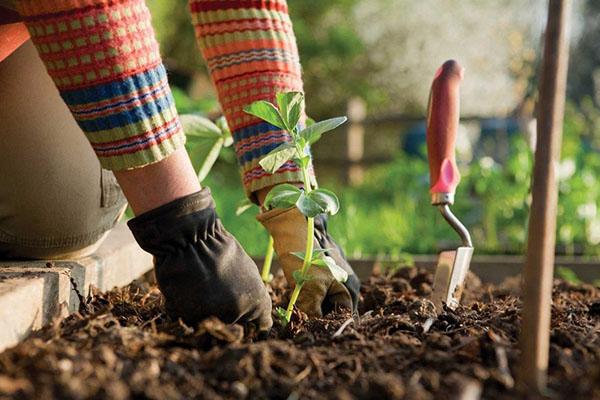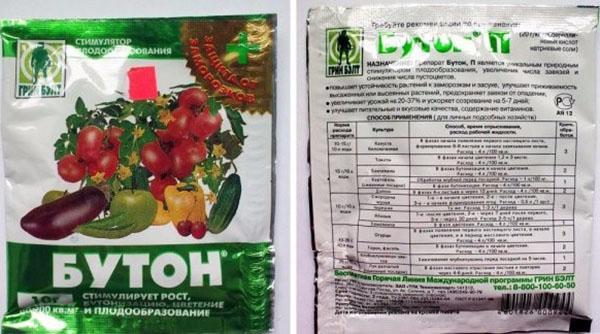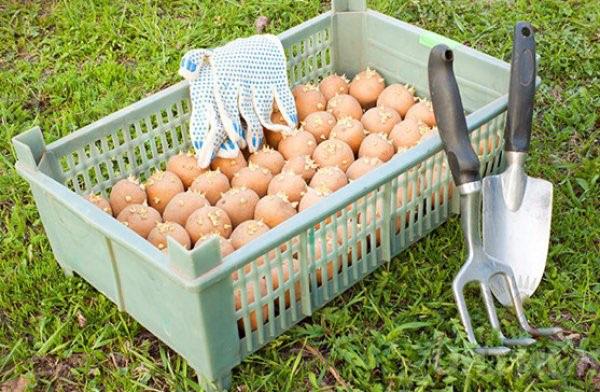Fertilizer Bud - instructions for use, composition and effectiveness for different crops
 Growth stimulator Bud, instructions for use, which is designed for various types of garden, vegetable and ornamental crops, is gradually gaining popularity. It is safe for plants and has the most suitable composition, which is fully absorbed and used for growth and development. It can be purchased in specialized stores - it is sold in small doses in the form of a powder, soluble in water. For maximum effectiveness, it is important to know how and in what dosage it is correct to use it for different types of plants.
Growth stimulator Bud, instructions for use, which is designed for various types of garden, vegetable and ornamental crops, is gradually gaining popularity. It is safe for plants and has the most suitable composition, which is fully absorbed and used for growth and development. It can be purchased in specialized stores - it is sold in small doses in the form of a powder, soluble in water. For maximum effectiveness, it is important to know how and in what dosage it is correct to use it for different types of plants.
Composition of the preparation

Another component of the Bud remedy is humates, organic fertilizers... They are obtained from peat, silt, manure, plant residues.
It also contains several vital trace elements:
- boron - prevents the ovaries from falling off and damage to the roots, strengthens the immune system;
- copper is an important compound for protection against fungal and bacterial diseases;
- manganese - essential for the processes of photosynthesis and fruit formation.
The harmonious composition affects all life processes of plants. Due to this, in the instructions for use of Bud, it is allowed to use it for any fruit and ornamental crops.
Mechanism of action and effectiveness
 Fertilizer Bud is a complex product that stimulates growth, flowering and fruit formation. It is safe for crop yields and can also be used to restore plants after frost or other unfavorable conditions.
Fertilizer Bud is a complex product that stimulates growth, flowering and fruit formation. It is safe for crop yields and can also be used to restore plants after frost or other unfavorable conditions.
The tool has several effects:
- increases resistance to temperature extremes, the percentage of seed germination and the survival rate of seedlings;
- protects the ovaries and prevents them from falling off;
- improves yields up to 30%, reduces the ripening time of fruits to 7 days while maintaining their quality and vitamin content;
- strengthens immunity and increases the resistance of plants against phyto-diseases and adverse environmental factors.
The instructions for use of Bud indicates that it can be used in several ways. Thus, it is suitable for spraying aboveground parts of plants, as well as for soaking seeds and tubers before planting in the ground.
Instructions for use
 Means for ovary Bud is available in powder form. The substance is highly soluble in water, and can only be used in a diluted form. To prepare a working solution, the required amount of powder is diluted in a small volume of liquid, and then the water is brought to the required amount, stirring occasionally. It is used immediately - the drug cannot be stored in liquid form.
Means for ovary Bud is available in powder form. The substance is highly soluble in water, and can only be used in a diluted form. To prepare a working solution, the required amount of powder is diluted in a small volume of liquid, and then the water is brought to the required amount, stirring occasionally. It is used immediately - the drug cannot be stored in liquid form.
Water for preparing the working solution should be at room temperature. Too cold liquid, especially in bright sunlight, can damage the green part of plants.
Dosages for different cultures
 Bud is a fertilizer for vegetables and fruit trees, as well as for ornamental plants. Different crops will require separate dosages and application schedules.The table shows the basic requirements for the concentration of the working solution and the frequency of treatments.
Bud is a fertilizer for vegetables and fruit trees, as well as for ornamental plants. Different crops will require separate dosages and application schedules.The table shows the basic requirements for the concentration of the working solution and the frequency of treatments.
| Culture | The amount of the drug per 1 liter of water, gram | Working solution consumption | Usage schedule |
| Potatoes | 1,5 | 1 liter per 10 kg tubers or 4 liters per 100 m2 landings | For soaking tubers before planting, irrigation when buds appear |
| White cabbage | 1 | 4 l per 100 m2 | When the first leaf is formed, then 6-8 leaves and during the appearance of buds |
| Cucumbers, tomatoes | 1 | 1 l per 100 m2 | During budding, at the beginning of flowering, at the appearance of brushes or mass flowering |
| Bow | 2 | 1 l at 25 m2 | During the period of mass release of arrows |
| Legumes (beans, peas) | 1—2 | 1 l at 25 m2 | During bud formation and mass flowering |
| Strawberries, grapes | 1—2 | 1 l at 25 m2 | During the period of intense flowering and the formation of the first berries |
| Fruit trees | 1 | 1 L per plant (for tall - up to 3 L) | Use from the beginning of the warm season |
| Coniferous trees | 3 | From 1 L per plant, depending on size | Apply from the beginning of the growing season |
| Flower plants | 1 | Until the leaves are completely wet | During the appearance of buds |
Fertilizer for indoor plants Bud is convenient to use at home. The drug is sold, including in small dosages, in packs of 2 grams.
The bud is a harmless growth stimulant, belongs to the third class of danger. This means that it is non-toxic, does not affect the quality of the soil and does not harm insects. However, you should follow the precautionary rules - wear a protective suit with a mask, carry out processing only in calm weather. For spraying, take the indoor flower to a well-ventilated room.